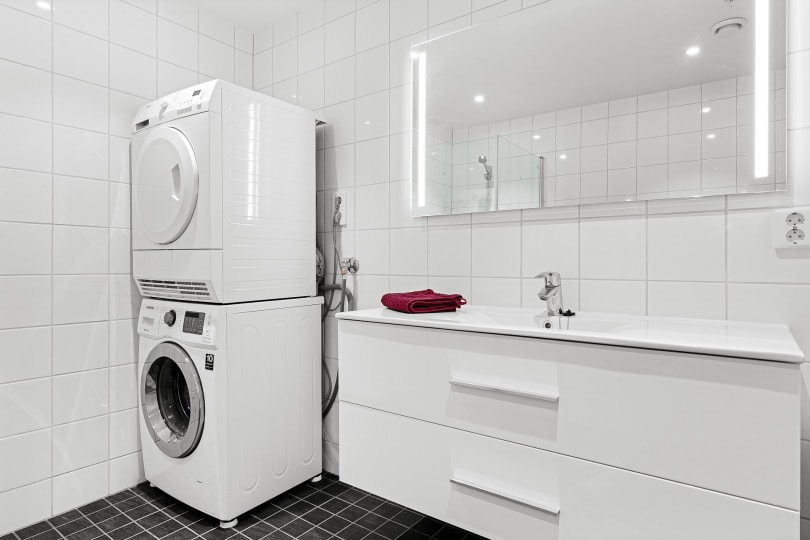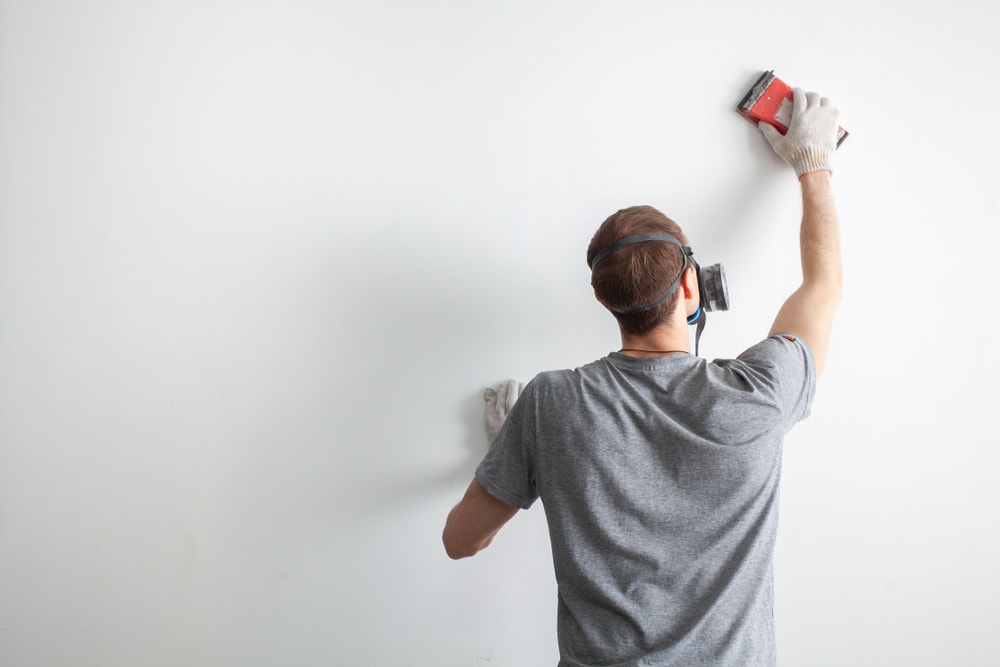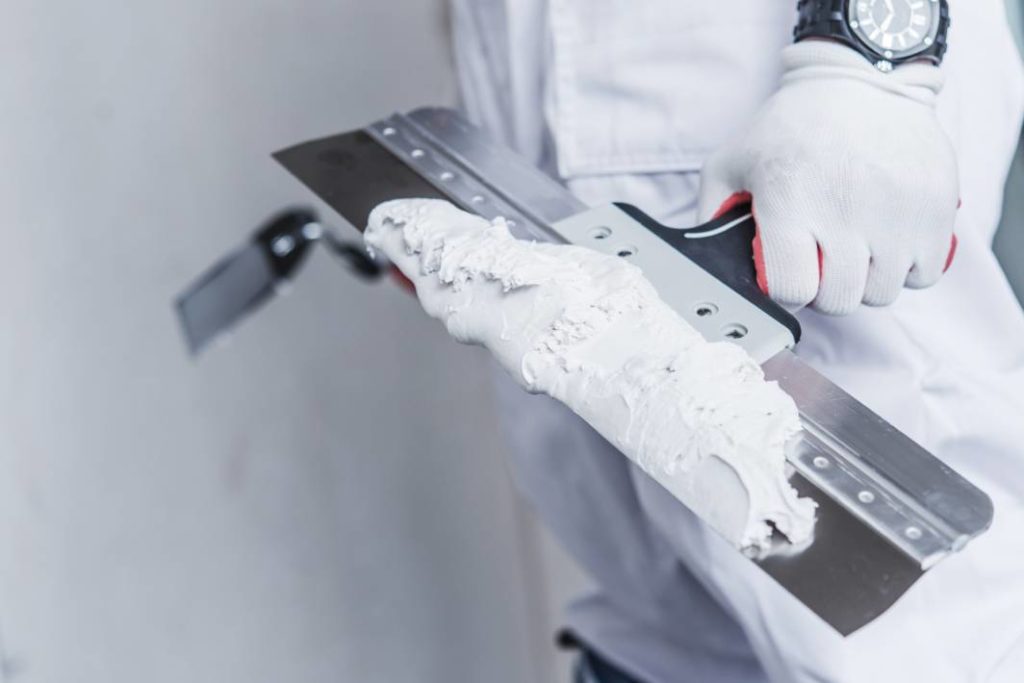How Thick Is Drywall? Pros, Cons, & Differences
-
Pete Ortiz
- Last updated:

Drywall is all around us. It’s used in the construction of both private homes and apartment buildings. Drywall is cheap, reliable, and lasts for a long time, and that’s why no construction site does without it. How thick is it, though? While this material does come in various sizes, the most commonly-used sheets are 1/2-inch thick. This is the golden standard for most ceilings and walls.
So, does that mean anything thinner or thicker than that won’t work? What is drywall made of, exactly? Should you go for larger panels or not? Is drywall dust dangerous to human health? We’ll cover all these topics in this guide and help you pick the perfect drywall thickness for both the ceiling and walls. Here goes!
What Is Drywall? Why Is It So Popular?
Drywall is a construction material—that’s the quick answer. If we dive a bit deeper, we can see that at the heart of any drywall board is gypsum plaster, a cementing material also known as CCD (calcium sulfate dihydrate). It sits right in the middle of heavy paper, cardboard, or fiberglass (two layers) that holds it in place. Together, this mighty combo forms a sheet of drywall.
Mostly used for walls, it’s also perfect for ceilings, eaves, and arches. Non-combustible, noise-dampening, easy to cut or shape, and quick to install, drywall (often called wallboard or plasterboard) has been heavily used in the US since the 40s.
During 1946–1960, American construction companies built more than 20 million homes using drywall! Today, the US and Canada produce 20+ billion square feet of wallboard a year.

Fire-Rated vs Impact-Resistant: What’s the Difference?
Did you know that there are seven types of drywall out there? That’s right, and while they’re mostly the same and have similar treats, these panels are designed and manufactured for slightly different purposes:
- For example, with a standard gray sheet, you’ll get a cheap, durable material. It’s the best option for remodeling on a budget. It doesn’t have any extra “features”, but that’s exactly why the standard drywall is so affordable. You can use it both for walls and ceilings.
- Green board drywall is a go-to choice for kitchens and basements because it can handle above-average humidity levels. It’s almost as cheap as standard drywall. However, it’s not 100% moisture-resistant and won’t be able to survive constant exposure to water.
- For that, go with paperless (covered in fiberglass) or purple drywall (often used in areas taken over by mold). Both these panels are specifically crafted to withstand mold and mildew. Over time, paperless and purples drywall will, of course, break down, but they’re still the best pick against humidity/water.
- Next, type X panels resist extreme temps and fire and meet strict building codes. They are expensive and rather heavy. But, if you live in an extremely hot and dry state/city or want to protect the house from sudden electricity spikes, type X is the way to go.
- Finally, we have the soundboard (strong noise-canceling properties) and blue board (veneer plaster-friendly) drywalls. VOC-absorbing drywall is also an option (it works like a sponge for chemicals) but it can be very expensive.
So, yes, there’s more than enough to choose from!
So, How Thick Does Drywall Have to Be?
If you’re planning on working on the walls in your room/house, go with 1/2-inch drywall. This is the perfect thickness that makes the panels equally sturdy, long-lasting, lightweight, and easy to work with. You can, of course, opt for something different, like 5/8 inches. With that, you’ll get much better sound dampening. Thick drywall is a great pick for projects where sturdiness is the top priority.
However, it’s not particularly light or easy to hang. In contrast, 1/4-inch drywall is the thinnest type, but it can’t be used as the main material for the wall. Instead, it’s often installed over pre-existing walls to hide imperfections like scratches, cracks, and whatnot. Thin drywall is highly versatile and takes little effort to bend or cut. Finally, 3/4-inch drywall is the golden middle. Use it to fix a layer of drywall.

Should Walls and Ceilings Differ in Thickness?
There aren’t that many differences between walls and ceilings unless you’re working on a custom project with unique requirements to meet. You can use the same drywall panels for both surfaces and the results will be more than decent. With that said, ceilings will benefit from thicker (5/8-inches) drywall as it will be protected against fires and sagging.
When working on the walls, stick with 1/2-inch boards. There’s little reason to pay for thicker drywall here. You’ll still have a choice between soundboard panels (let’s say you’re building a studio), green drywall (planning on rearranging the kitchen), and all the other categories that we discussed earlier. Do keep in mind, though, that there are no drywall sheets that are equally strong against fire, moisture, and rot.
What About the Size? Finding the Right Pick
Alright, with thickness out of the way, let’s talk about the size of the panels. Just like any other construction material, drywall comes in various sizes that fit different tasks.
- 4×8-foot drywall. This is the most affordable, widely available, and flexible size. That makes it the perfect choice for small and medium-sized projects. The reason: 4×8-foot drywall boards are relatively lightweight (50 pounds/22kg) and easy to cut. More than that, they don’t only have to be installed vertically (you can mount these boards horizontally, too), which is a big pro.
- 4×10-foot drywall. If you’re going for a smooth, easy-to-paint surface, this size will be your best bet, especially when working with taller-than-average walls. As for the cons, 4×10-foot drywall panels are around 50% heavier (76 pounds/34kg) and take more effort to move around.
- 4×12-foot drywall. Construction workers and DIY enthusiasts in the market for the longest wallboards should opt for 4×12-foot drywall. While they are rather heavy, bulky, and hard to handle with a single set of hands, with these panels, you can cover more area and make it look smoother. Now, 4×16-foot drywall is also available, but it’s not that common.

How Long Does Drywall Last?
Most construction materials are designed to last for a long time, and drywall is a great example of that. On average, it serves for 40–70 years, depending on the area that you live in. We’re talking about the climate, seismic activity, and other factors. However, when exposed to mildew, abnormal levels of humidity, or water buildup, expect the lifespan to be cut in half (20–30 years).
Water makes it soft and increases the deterioration rate. So, if you see drywall panels fading, losing color, and developing cracks and holes, that means a replacement is in order. That’s why it’s often recommended to buy mold-resistant drywall for the walls. Pests (mostly termites) are another big problem. On the bright side, this is a highly versatile material, and you won’t have to replace an entire wall to fix a damaged section.
Drywall Dust: Is It Dangerous?
No, wallboard panels don’t threaten health unless you’re constantly exposed to them. And that will only happen if you intentionally damage or break the boards. As we learned earlier, the gypsum plaster in drywall boards is encased in fiberglass or cardboard that prevents it from being released into the atmosphere. So, there’s very little to worry about when you’re moving to a house that’s built using drywall.
Construction workers, in contract, are, indeed, often exposed to dangerously high concentrations of drywall dust. According to the CDC, this mostly applies to workers that specialize in sanding joint compounds. Drywall dust is rich in calcite, silica, and other hazardous chemicals that can make the throat, nose, and eyes hurt. Breathing these compounds for a long time may lead to irritation of the lungs.
Conclusion
Drywall can be as thin as 1/4 inch or as thick as 5/8 inch. It all comes down to what you’re looking for at the moment. For most DIY projects, 1/2-inch drywall is the perfect pick. Even if you’re working on the interior walls/ceiling on your own, it won’t be hard to handle these sheets, which is why this construction material is so popular.
Now, while most of us look at the thickness of the panels first, you can also pick between different designs, sizes, and categories. Drywall is one of the easiest construction materials to work with and comes at a reasonable price, especially if you buy it in bulk. So, put our guide to good use and get to work!
Featured Image Credit: Pixabay
Contents


